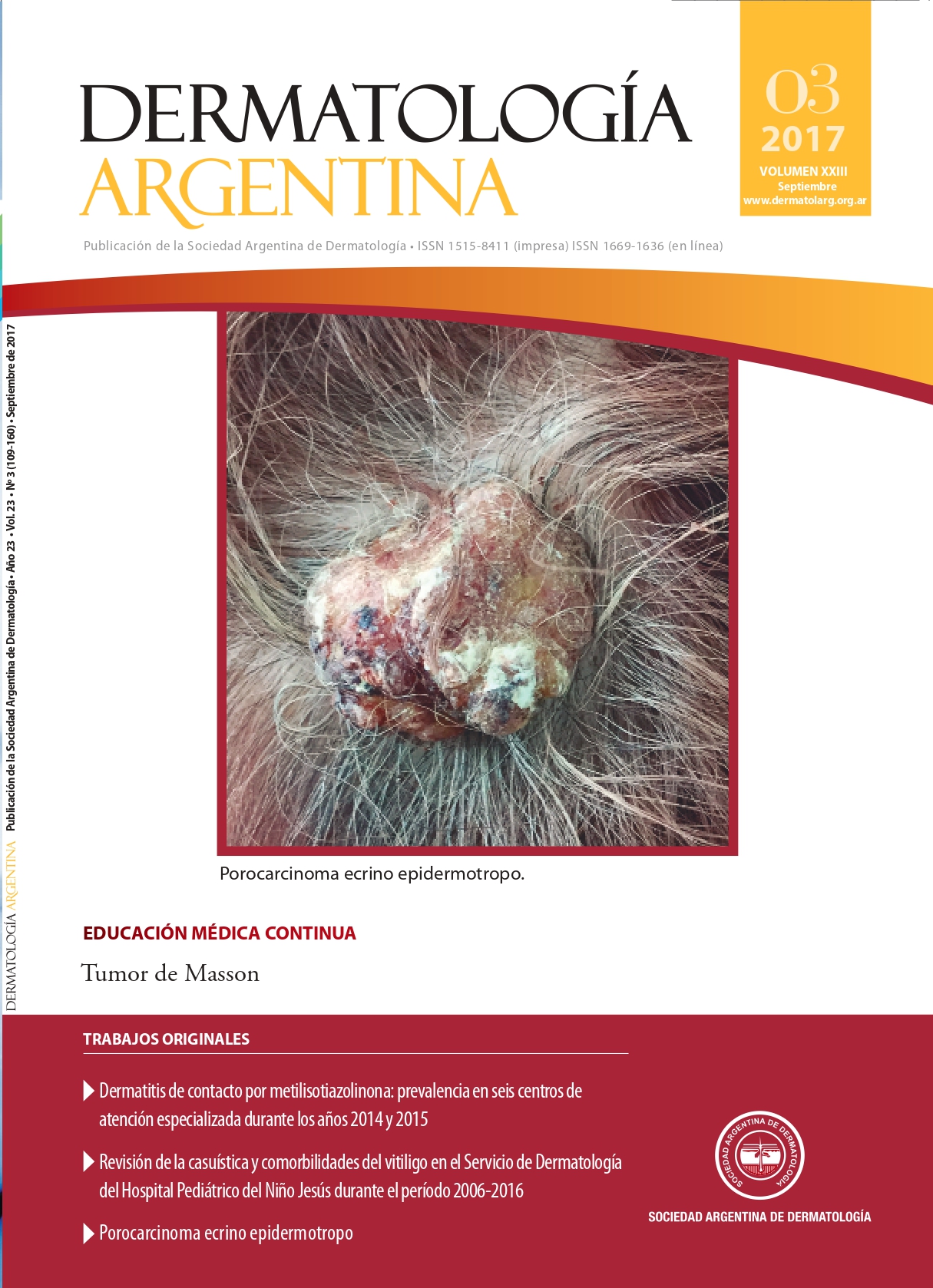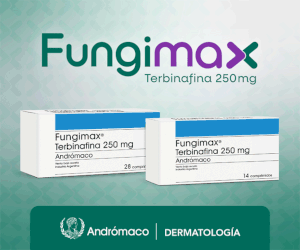Vegetative pyoderma gangrenosum
Keywords:
vegetative pyoderma, yoderma gangrenosumAbstract
Vegetative pyoderma gangrenosum is a rare variety of pyoderma gangrenosum. Usually manifests as a painless superficial ulcer and slow growth in the trunk. The association with underlying systemic disease is not common. Treatments for vegetative pyoderma gangrenosum include systemic and topical glucocorticoids, minocycline or doxycycline, dapsone, colchicine, and, rarely, alternative steroid-sparing immunosuppressants. We present a case of multiple vegetative pyoderma gangrenosum lesions with good response to glucocorticoids and minocycline.
References
I. Pizzariello G, Olivares L, Lois M, Anaya J, et ál. Pioderma gan-grenoso vegetante. Presentación de 7 casos. Dermatol Argent2012;18:383-388.
II. Kim RH, Lewin J, Hale CS, Meehan SA, et ál. Vegetative pyo-derma gangrenosum. Dermatol Online J 2014;16;20:1-3.
III. Langan SM, Powell FC. Vegetative pyoderma gangrenosum: a report of two new cases and a review of the literature. Int J Dermatol 2005;44:623-629.
IV. Wilson-Jones E, Winkelmann RK. Superficial granulomatous pyoderma: a localized vegetative form of pyoderma gangre-nosum. J Am Acad Dermatol 1988;18:511-521.
V. Molodoi AD, Dimitriu A, Andronic CD, Stoleriu G, et ál. Pyo-derma vegetans developed on chronic leg ulcer. Rev Med Chir Soc Med Nat Iasi 2015;119:107-111.
VI. Mansouri M, Rakhshan A, Shahidi-Dadras M, Karimi A, et ál. Pyoderma vegetans: a case report in a child suspected to primary immunodeficiency and review of the literature. Iran J Med Sci 2015;40:381-385.
VII. Su WP, Davis, Weenig RH, Powell FC, et ál. Pyoderma gangre-nosum: clinicopathologic correlation and proposed diagnos-tic criteria. Int J Dermatol 2004;43:790-800.
VIII. Meşină C, Vasile I, Mogoantă SŞ, Ciurea ME, et ál. Pyoderma vegetans of the posterior area of the neck: case presentation. Rom J Morphol Embryol 2015;56:563-568.
IX. Vahedi H, Nozari N, Sotoudeh M. Report of a rare case of nasal mucosa pyoderma vegetans in a patient with ulcerative coli-tis. Middle East J Dig Dis 2015;104-106.
X. Kambil SM, Bhat RM, Dandekeri S. Granulomatous pyoderma gangrenosum of the genitalia in the absence of Crohn’s di-sease. Indian J Sex Transm Dis 2015;36:67-69.
Downloads
Published
Issue
Section
License
Copyright (c) 2017 Argentine Society of Dermatology

This work is licensed under a Creative Commons Attribution-NonCommercial-NoDerivatives 4.0 International License.
El/los autor/es tranfieren todos los derechos de autor del manuscrito arriba mencionado a Dermatología Argentina en el caso de que el trabajo sea publicado. El/los autor/es declaran que el artículo es original, que no infringe ningún derecho de propiedad intelectual u otros derechos de terceros, que no se encuentra bajo consideración de otra revista y que no ha sido previamente publicado.
Le solicitamos haga click aquí para imprimir, firmar y enviar por correo postal la transferencia de los derechos de autor












